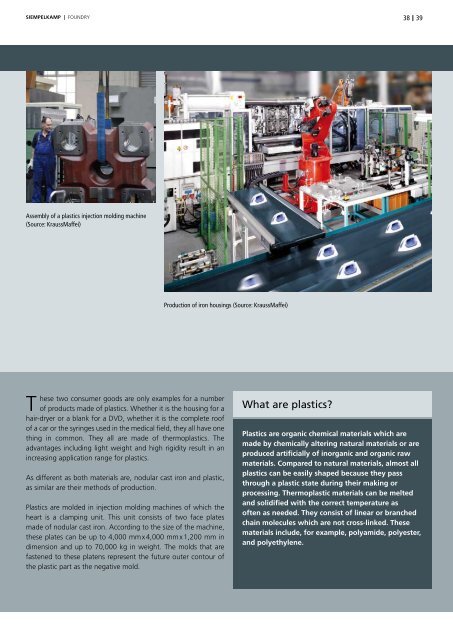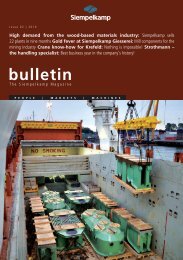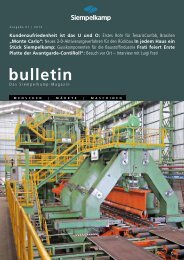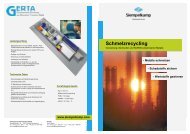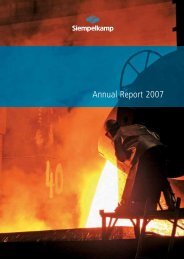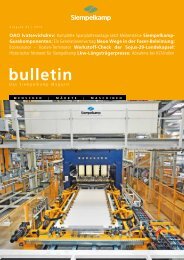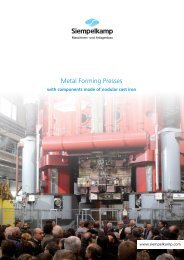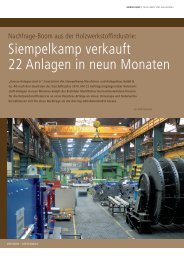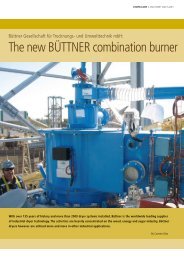Bulletin 1/2011 - Siempelkamp
Bulletin 1/2011 - Siempelkamp
Bulletin 1/2011 - Siempelkamp
Create successful ePaper yourself
Turn your PDF publications into a flip-book with our unique Google optimized e-Paper software.
SieMpelkaMp | FOUnDRy<br />
Assembly of a plastics injection molding machine<br />
(Source: KraussMaffei)<br />
Production of iron housings (Source: KraussMaffei)<br />
t<br />
hese two consumer goods are only examples for a number<br />
of products made of plastics. Whether it is the housing for a<br />
hair-dryer or a blank for a DVD, whether it is the complete roof<br />
of a car or the syringes used in the medical field, they all have one<br />
thing in common. they all are made of thermoplastics. the<br />
advantages including light weight and high rigidity result in an<br />
increasing application range for plastics.<br />
As different as both materials are, nodular cast iron and plastic,<br />
as similar are their methods of production.<br />
Plastics are molded in injection molding machines of which the<br />
heart is a clamping unit. this unit consists of two face plates<br />
made of nodular cast iron. According to the size of the machine,<br />
these plates can be up to 4,000 mm x 4,000 mm x 1,200 mm in<br />
dimension and up to 70,000 kg in weight. the molds that are<br />
fastened to these platens represent the future outer contour of<br />
the plastic part as the negative mold.<br />
What are plastics?<br />
Plastics are organic chemical materials which are<br />
made by chemically altering natural materials or are<br />
produced artificially of inorganic and organic raw<br />
materials. Compared to natural materials, almost all<br />
plastics can be easily shaped because they pass<br />
through a plastic state during their making or<br />
processing. Thermoplastic materials can be melted<br />
and solidified with the correct temperature as<br />
often as needed. They consist of linear or branched<br />
chain molecules which are not cross-linked. These<br />
materials include, for example, polyamide, polyester,<br />
and polyethylene.<br />
38<br />
39


